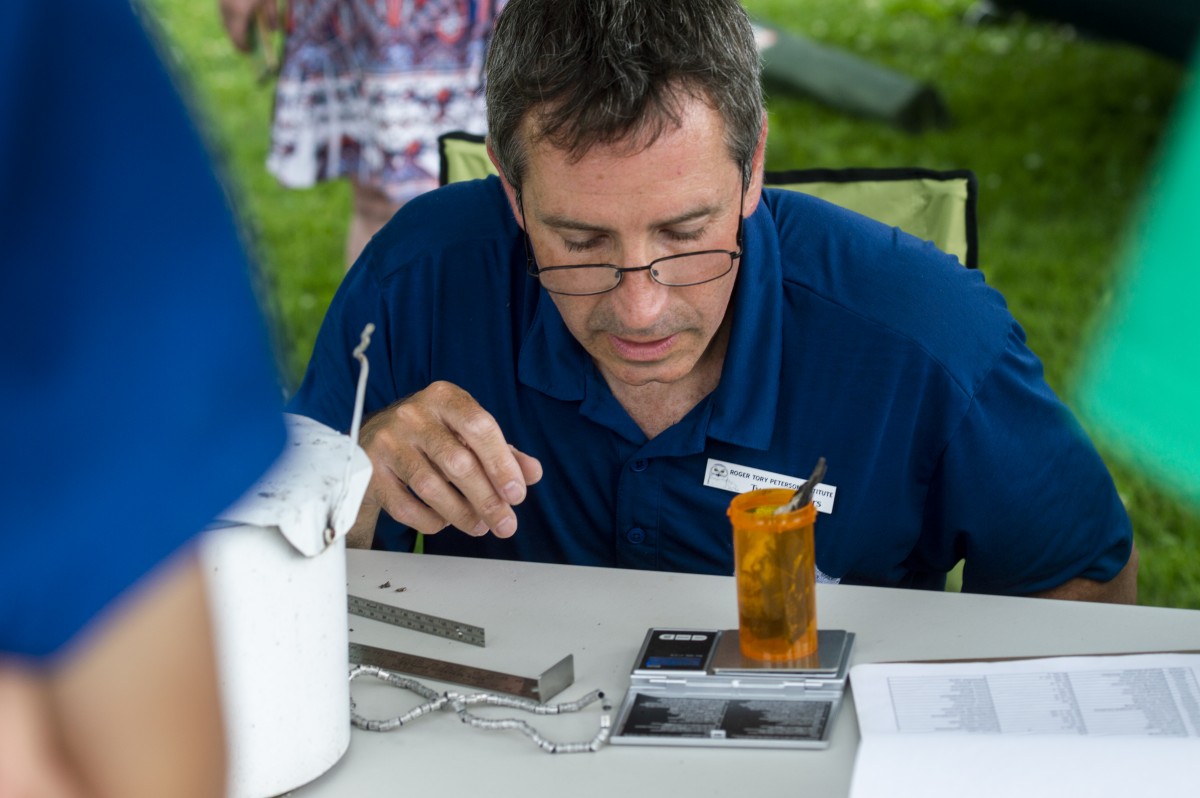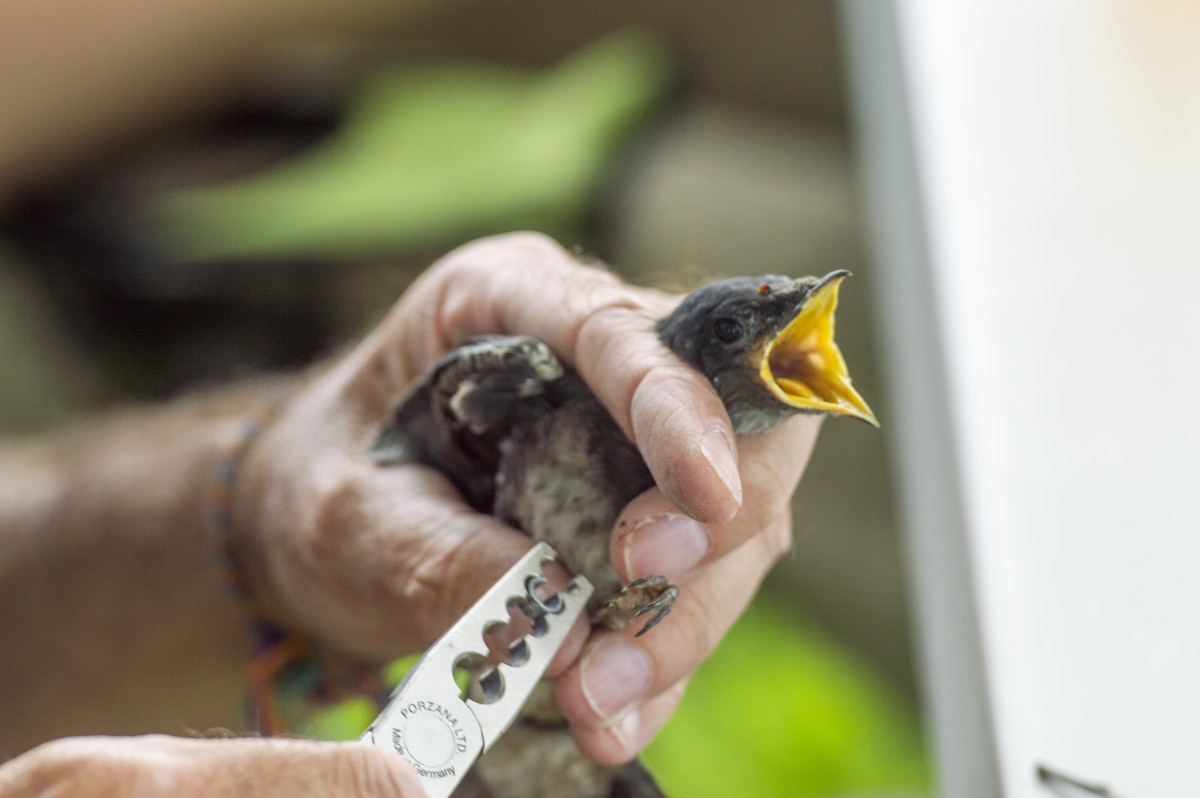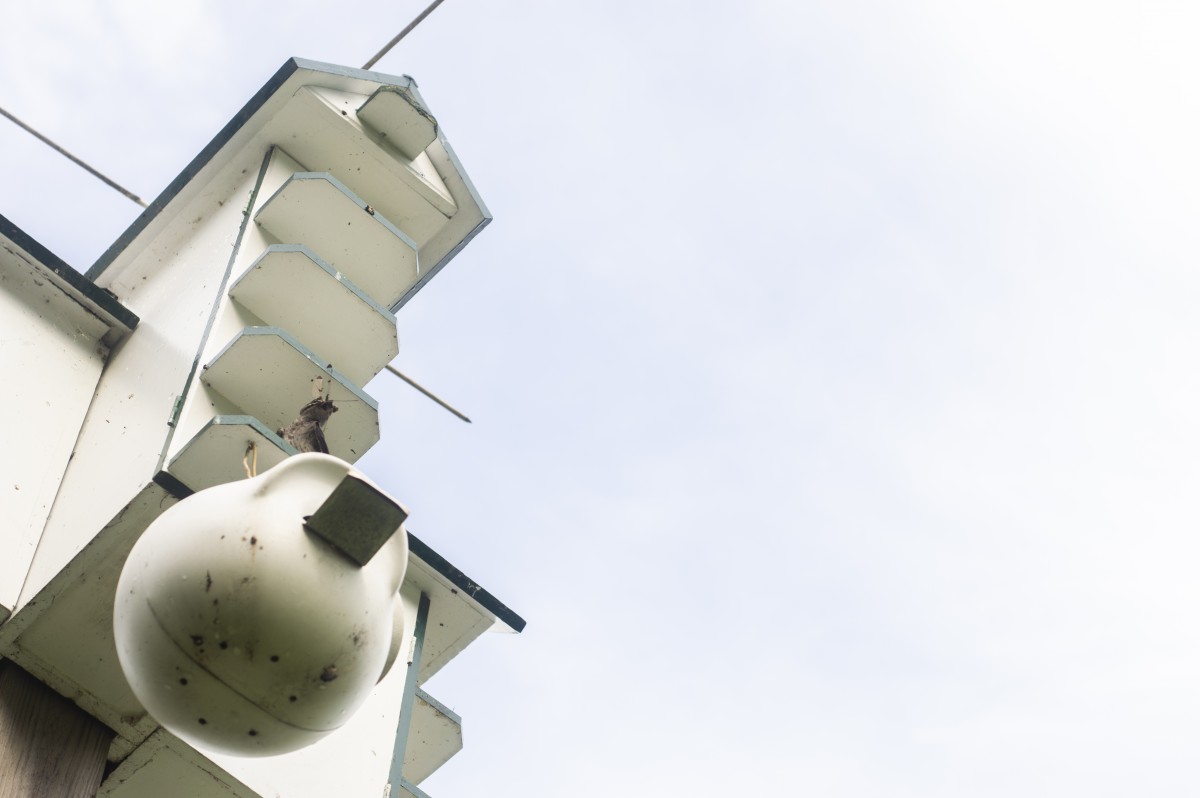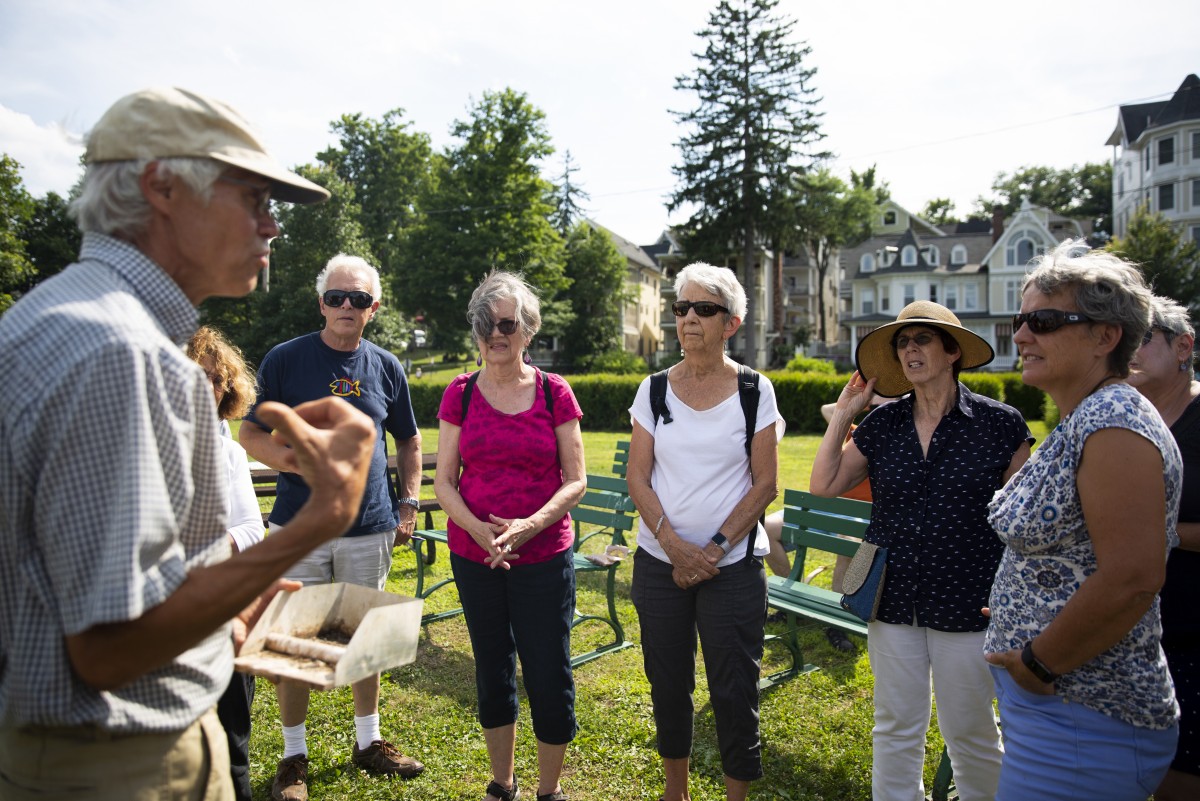With a purple martin chick in one hand and a pair of specialized pliers in the other, Twan Leenders carefully closed a metal ring around the bird’s leg, so that it was on securely, but had a bit of wiggle room.
The purple martin’s new bling was issued by the Bird Banding Laboratory under the United States Geological Survey. It will remain on the bird’s leg for the rest of its life, with the hope that someone, somewhere along the bird’s migration path, will be able to temporarily catch the bird, read the number on the band and enter it into an online database.
The data, collected by a hodgepodge of dedicated scientists, can be used to improve biologists’ understanding of purple martins, including their life span and migration patterns.
“It’s the only way,” said Leenders, a conservation biologist and president of the Roger Tory Peterson Institute. “It’s a very low-tech science. For every bit of information we collect that is related to natural history traits or survivorship or breeder success, that’s the one tool we have.”
A light rain fell as he worked on the afternoon of July 19, but Leenders and his white folding table were mostly covered by a tree near the John R. Turney Sailing Center where three clusters of man-made purple martin clusters stand near the water’s edge.
The assembly line went like this: Jack Gulvin, who has been taking care of the purple martins at Chautauqua Institution for 20 years, removed nests — each with about three to five chicks — from their compartments. Then, Gulvin handed the nests to a high school-student intern in Leender’s Project Wild America youth ambassador program, who carried the nests to Leenders.
He then removed each of the chicks one-by-one, banding them, and measuring their lengths and weights. Another student intern to Leenders’ left recorded those measurements and the number on the band on a spreadsheet.
In all, Leenders banded 44 birds — 22 near the sailing center and 22 from a purple martin house near Miller Bell Tower.
Leenders banded about 20 purple martins last year, the first time the birds were marked at Chautauqua.
None of those 20 birds have yet been spotted and tagged in the online database. Banding birds is a bit like throwing a needle into a haystack and hoping to find it later; banding and monitoring is a labor-intensive, slow process that does not yield many recapture or re-count events, according to both Leenders and Gulvin.
“You just hope they’re going to show up somewhere else,” Leenders said. “You band thousands of birds, and you might get one record back.”
Over his 20-year career with purple martins, Gulvin has seen four banded birds at Chautauqua, all of whom were banded in Pennsylvania, where the Purple Martin Conservation Association is headquartered.
“It’s always exciting, regardless of where they came from, to get a band return,” Gulvin said. “You read the number and write the number down, even though you’re so excited your hands are kind of shaking.”
When someone finds a banded bird, they can upload the bird’s number into the online database. The person who bands the bird — who must be federally licensed — will be notified where the bird was found. People who find banded birds and record the bird’s number in the database are mailed a certificate of appreciation with details about the bird they found.
Leenders said there are plenty of bird banders in North America, but not so many in Central and South America, where many bird species migrate for the winter. Purple martins are known to make it as far south as Brazil.
“The chances of the birds being banded in North America being caught in the tropics are slim to none,” he said.
In the winter, Leenders bands birds in Costa Rica and Panama, in hopes that someone will notice them when they head up north again for the summer.
Chautauqua’s purple martins are at the perfect age for banding right now, Leenders said. They are young enough that they haven’t fledged yet, but developed enough so he can band them without worrying they will outgrow the band.
Adult purple martins are more difficult to band because they are difficult to catch. Leenders said he typically uses a net — that becomes nearly invisible in a wooded setting — to catch birds in forests. But purple martins tend to dwell in wide-open spaces such as large fields or near large bodies of water, so the net method does not work as well.
There is still a lot that is unknown about purple martins, including the species’ life span and migration routes.
“It would be helpful to know whether birds migrate straight through or stop over, to identify where they breed,” Leenders said.
Scientists know that purple martins return to the same region, but not necessarily the same colony. If banding data shows that purple martins are migrating farther north than usual, it could be an indication more purple martin housing would be needed. On the East Coast, purple martins are entirely dependent on man-made housing, Gulvin said.
“It gives indications of where we need to use our efforts and put our resources to protect the migrating population of these birds,” Leenders said.
After each bird was banded, they were placed back in their nests, which Gulvin inserted into their respective compartments.
Soon, the chicks will learn to fly, and by the end of the summer, they will begin their long migration south.
One day, some might make their way back to Chautauqua Institution, where they may breed the next generation of purple martins.






